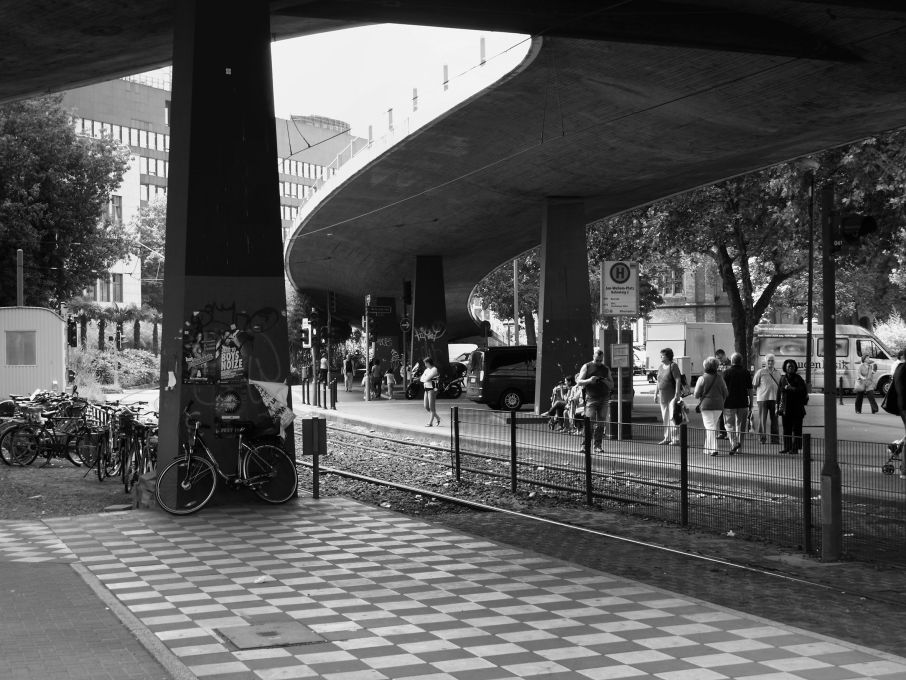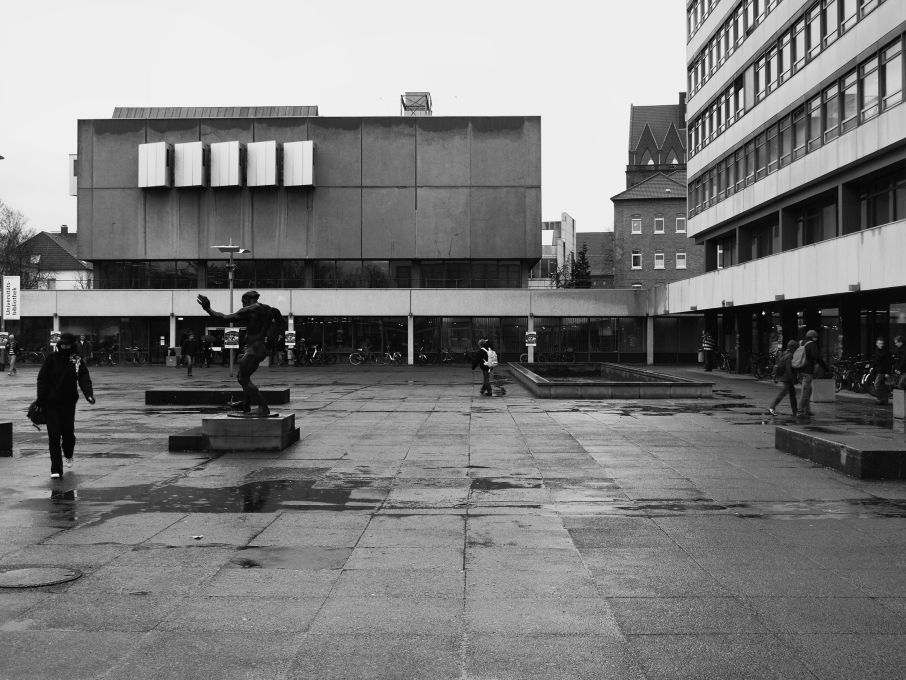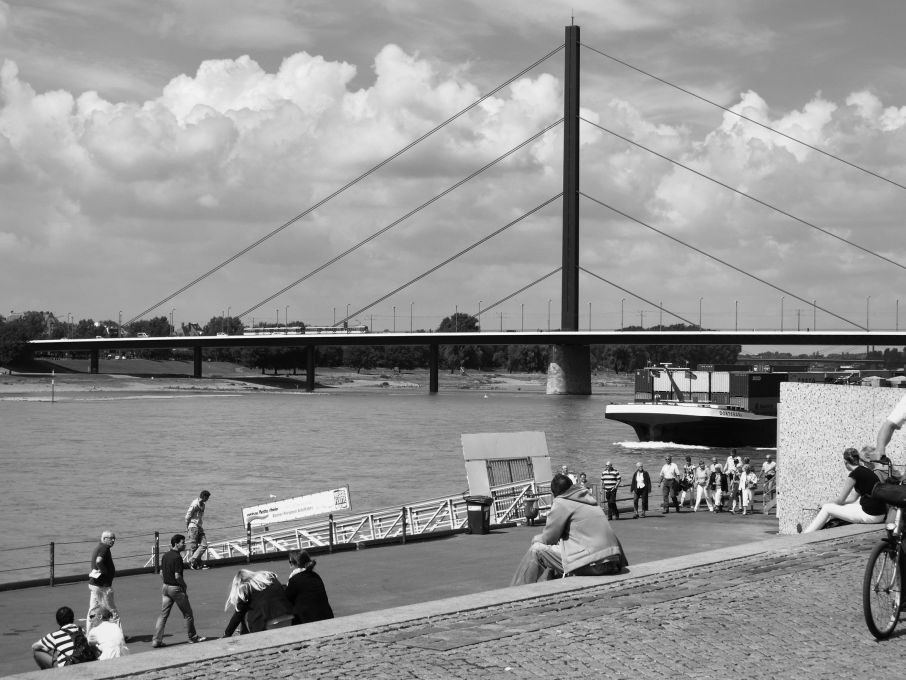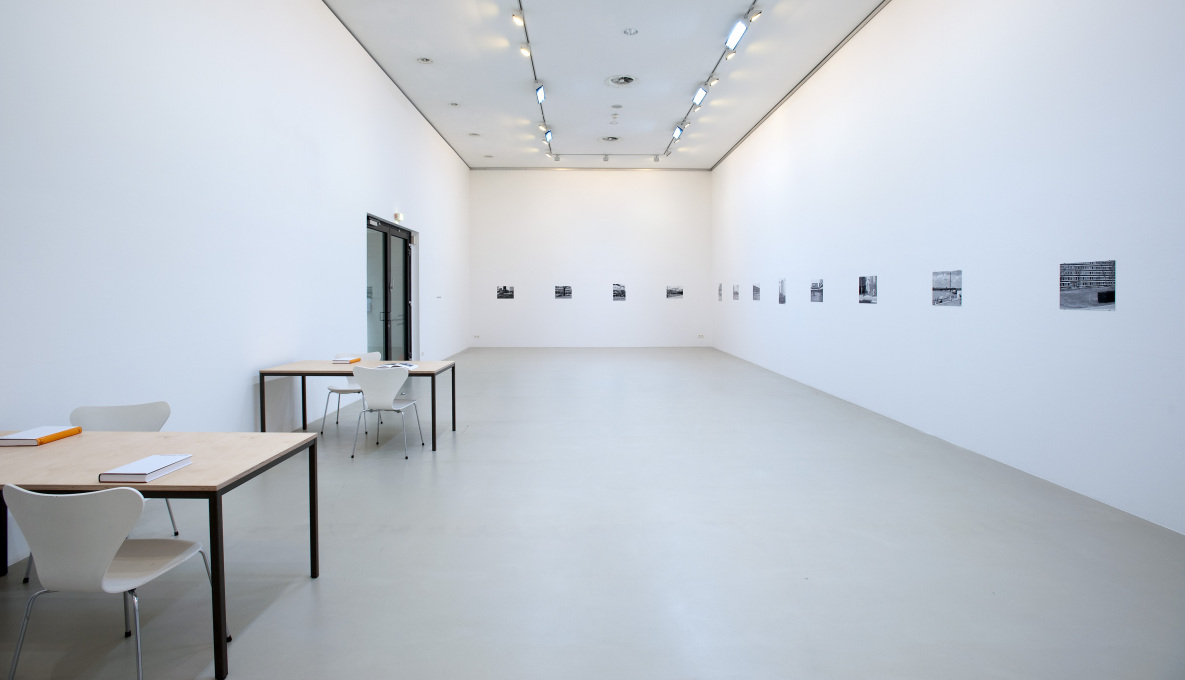“For or against?” This question has not been heard for some time now, and maybe it has even become a taboo among architects, art historians, and artists dealing with what we call postwar modernism – generally meaning the period from around 1945 to 1975.
Against? Who would still say today that he or she is “against” postwar modernism? It’s already so unpopular everywhere, torn down or altered beyond recognition. Therefore we must fight to preserve the last authentic remnants of the era. Or do we?
Visiting the exhibition Wenn Gesinnung Form wird (“When Convictions Take Form”), currently on view at the Sprengel Museum in Hanover, one can’t be sure whether photographer Arne Schmitt advocates preserving the remaining examples of postwar modernism. In his black-and-white pictures, Schmitt – who was born in 1984 – presents Germany’s postwar modernist period as a series of utterly bleak places. This bleak impression becomes even stronger in his book by the same name, which includes 282 of his photos. The images gathered in the book seem to attest to every prejudice about the architecture and urban design of that era that have long since arisen in the world. Aren’t they in fact key witnesses that support complete demolition and a new start?
Schmitt arranges his pictures into chapters in the book, calling it a “collection of essays.” The chapters have strict titles that could have come directly from the discussions about reconstructing the cities hit particularly hard by the consequences of the war: “The Old Center,” “The Timber Framing Was the First to Burn,” “Repression and Return.” Other chapter titles are slogans from the time (e.g. “Prosperity for All”), which read like a bitter commentary on the images. Many of the pictures from cities like Hamburg, Koblenz, Giessen, Wolfsburg, and Frankfurt could have been taken in eastern Europe immediately after the fall of the Iron Curtain – hostile, run-down architecture with a few scattered people walking by. Sometimes the photographer seems like an ethnologist who gathers the strange legacies of this generation of architecture, especially when the street furniture of that era is depicted, such as fountains, strange circular flowerbeds, and pavilions, which look like alien relics of a vanished culture.
Schmitt’s images have a casual, documentary gesture. They are quite the opposite of the grandiose tributes to the architectural everyday that were presented by Bernd and Hilla Becher’s Dusseldorf School of photography – but especially by students of theirs like Struth, Ruff, Hütte, and Gursky – at a time well before architectural discourse believed it needed to hold a protective hand over the postwar buildings.
But isn’t the truth found more fully in Schmitt’s images than in those of the Becher school? The Frankfurt novelist and essayist Martin Mosebach recently published an angry reckoning with all that has been built after 1910, under the title Und wir nennen diesen Schrott auch noch schön (“And we even call this crap beautiful”) . Couldn’t this also be the title of Arne Schmitt’s photo collection? But instead, the catalogue bears the strange and unwieldy title, Wenn Gesinnung Form wird. In German, the word “Gesinnung” – meaning convictions, attitude, or disposition – seems oddly old-fashioned, and to today’s ears it could even sound like the language used by the Nazis. In the press release for the exhibition, Schmitt suggests how the title should be interpreted: postwar architecture is, to a great extent, the work of an elite group of technocratic planners who were already successful in the Nazi era and who, after 1945, were able to implement – largely unimpeded (and without reflection) – the principles of a decentralized and car-friendly city, as developed under Albert Speer. Schmitt quotes a British newspaper: “We may well get rid of the Hitlers and Himmlers, but the Speers will remain with us for a long time.”
So is German postwar architecture doubly stigmatized? By the lack of acceptance in today’s world and by the fact that it was not necessarily built by passionate advocates of democracy?
What kind of stance – what kind of Gesinnung – is it that compelled this young photographer to travel to some of the most unearthly places in western Germany? Is he too merciless to demolish the images of architecture that have been cemented in memory by other publications (through color and elaborate photographic techniques), creating a new canon not from generosity, elegance, or optimism, but only representations of decay and neglect?
We should not rhetorically embrace Schmitt’s project as another necessary step toward discovering an “unloved era.” Yes, the book is a document of utter bleakness. No, these places are not cool – nor are they so bad that they become somehow good again. What was done to several cities and their inhabitants during the postwar era was often simply horrible. Often, but not always. We should not overdo the retrospectively attributed pathos of a new beginning, because many of the plans were finished long before the war ended, intended for an entirely different social order.
If we do not fight to convert rather than remove architectural monstrosities – even if only because demolishing them would be ecologically irresponsible – then in their places we are almost certain to get a smoothed-out zero-architecture guaranteed to be missing one thing: character that is still worth arguing about in 40 or 50 years.
It’s not yet time to give up the hope of building differently today, with character, or at least with the robust inconspicuousness that constitutes the gray background needed by every city. So let’s move onward – completely without sentiment and without taboos, and with much (but not all) of what is gathered in Schmitt’s book. What eventually disappears will at least have been captured in pictures. Future generations will learn more about the everyday life of our era through unsentimental photo collections like those of Arne Schmitt than from countless historic preservation reports.
-- Oliver Elser, Frankfurt
Exhibition: Arne Schmitt: Wenn Gesinnung Form wird / Verflechtungen, until 3 March 2013
Sprengel Museum Hanover, Kurt-Schwitters-Platz, 30169 Hanover
Book: Arne Schmitt: Wenn Gesinnung Form wird. Eine Essaysammlung zur Nachkriegsarchitektur der BRD,
Ed.: Inka Schube, Design: Timo Grimberg, Hardcover,
Spector Books, Leipzig 2012








